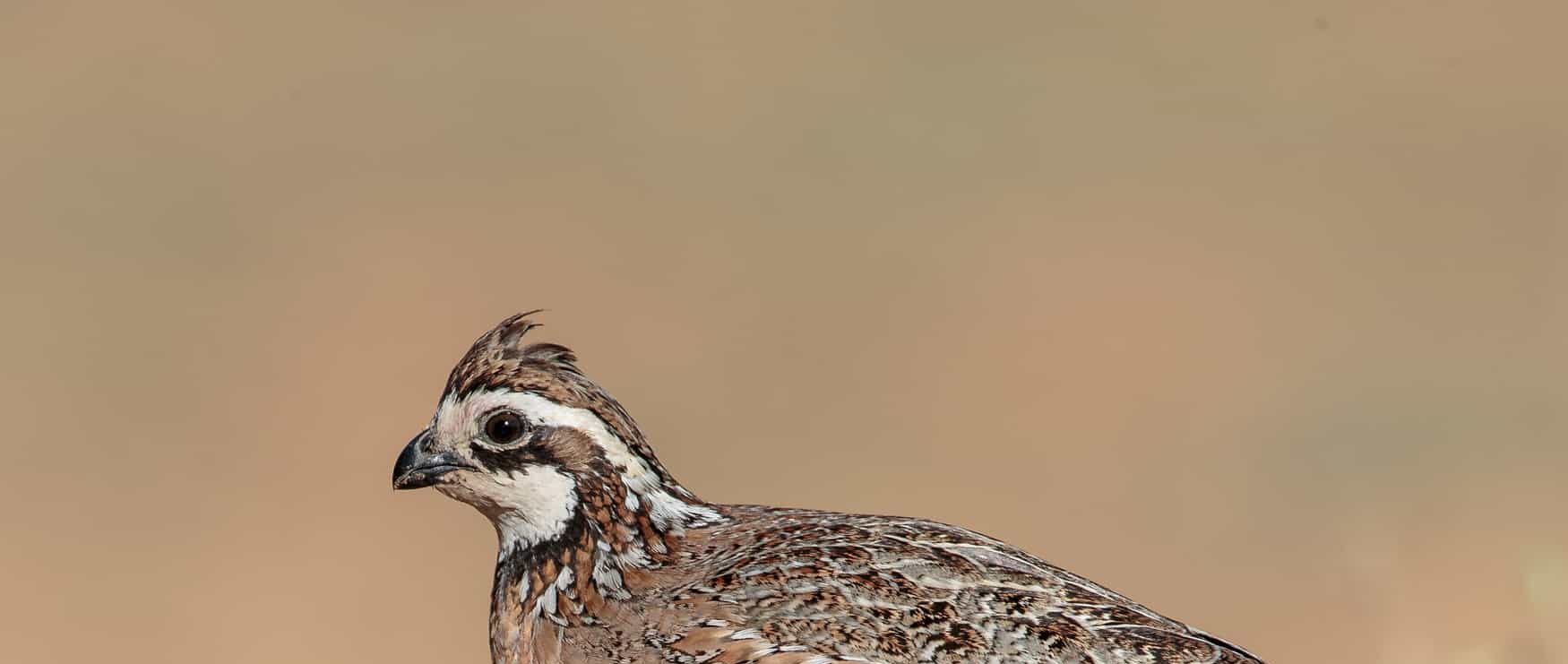
A&M-Commerce “Quail Professor” Says Temps Could Decimate Texas Quail Populations
Texas’ favorite game bird, the Bobwhite Quail, is in steep decline and a new research study finds that as little as four days of high Texas heat could crash Texas quail populations.
It is widely known that if it rains in Texas during the spring, quail populations increase. In hot drought years, quail populations drastically decline. But the underlying mechanism to this wet/dry phenomenon is unclear since it doesn’t actually rain quail.
Dr. Kelly Reyna, professor of wildlife and conservation science at A&M-Commerce, has been studying the impacts of heat stress on northern Bobwhite Quail. “Bobwhite Quail in Texas have a remarkable ability to grow their populations during good rainy years because each hen lays about 12 eggs,” Reyna said. “During hot drought years, the population decline is largely a result of less juvenile quail in the population, so it seemed intuitive to start investigating hatching success of quail eggs during hot years.”
Reyna's research, published by PLOS ONE, centers on the 12-day pre-incubation period when eggs are in the nest exposed to the environment, which — in Texas — can be quite hot. For the experiment, clutches of Bobwhite eggs were placed in normal spring temperatures for eight days and high spring temperatures for four days of the pre-incubation period. Afterward, all eggs were incubated normally since hens typically keep egg temperatures constant in nature. Post incubation, Reyna measured hatchling mass, hatching synchrony and hatching success.
Reyna’s results showed that just four days of high heat significantly reduced hatching success (the number of birds that hatch per clutch), and those that survived the study probably would not have survived long in the wild.
“Perhaps the most remarkable result is that eggs exposed to four days of high heat had reduced hatchling mass and their hatching synchrony was significantly compromised,” Reyna said. “That would produce an inferior or abandoned quail that would get eaten quickly.”
Hatching synchrony is when all eggs hatch within a few hours of each other, even though they have been laid up to 12 days apart. It allows hens to quickly move new hatchlings away from the nest before predators smell the hatched eggs or hear the new chirps of hatchlings. Heat-stressed hatchlings that miss the hatching window would probably be abandoned by their mothers and perish in nature. The results of this study are consistent with the significantly reduced number of juveniles observed in hot drought years, showing that heat is likely a major driver of waning quail populations in Texas and other semi-arid regions.
In light of the treacherous temps we face in Texas and Reyna's latest research, he suggests action be taken to assist the quail in survival.
“People can air condition quail by providing cooling zones like shrub cover and tall native bunch grasses,” Reyna said. “Temperatures can be reduced as much as 40 °F in the shade, so provide lots of it.” Reyna also suggests grazing around the Bobwhite lifecycle, leaving tall, thermal-buffering grasses on the landscape during the hot parts of the year and grazing portions of it afterward. This provides profit to the landowner and cooling zones for the quail, which just might allow them to make a big Texas rebound.
More Featured
View All Featured
KETR Celebrates 50 Years of Service to Northeast Texas
88.9 KETR is celebrating a major milestone this week: 50 years on the air. The National Public Radio (NPR) station went live on April 7, 1975, broadcasting from the Journalism Building at East Texas A&M University.

East Texas A&M Art Students Showcase Work in Juried Student Art Exhibition
The East Texas A&M University Department of Art is pleased to announce the winners of the 2025 Annual Juried Student Art Exhibition.

Why Advancing from RN to BSN Matters More Than Ever – And How It’s Faster and Cheaper Than You Think
At East Texas A&M University, an RN can earn their BSN in a matter of months while avoiding many of the drawbacks of the standard college experience.


